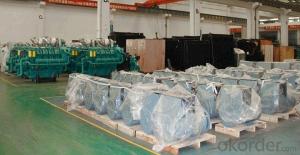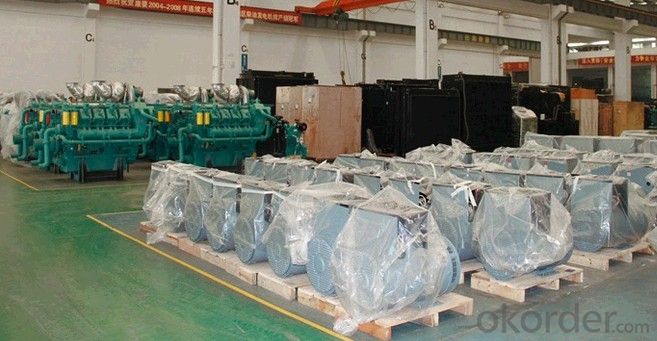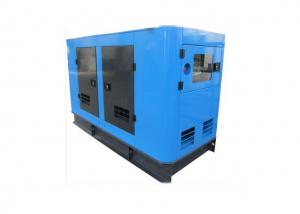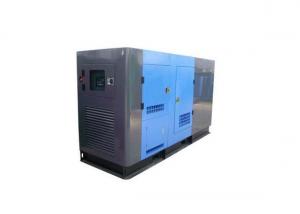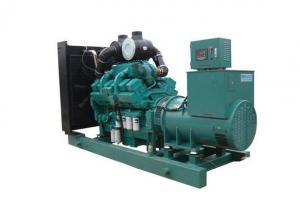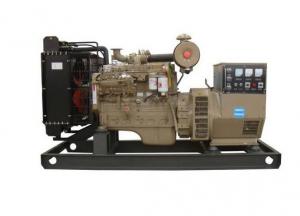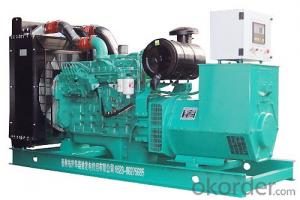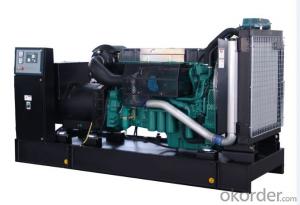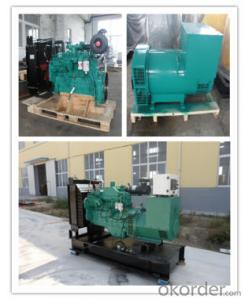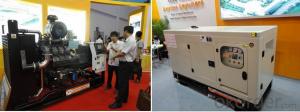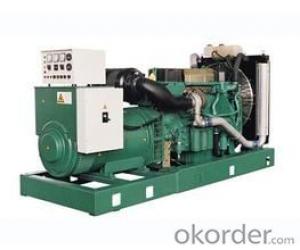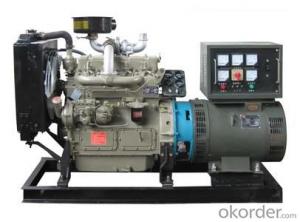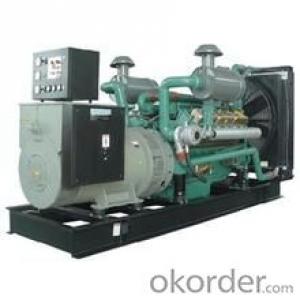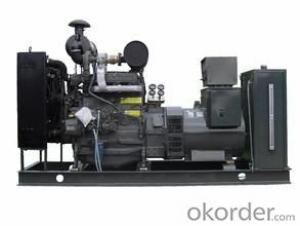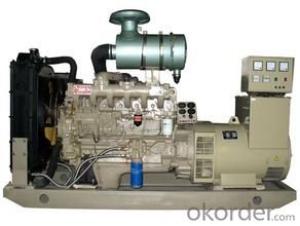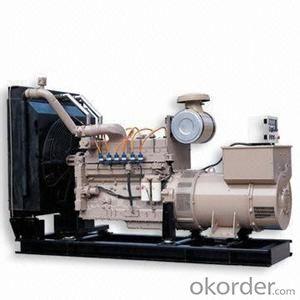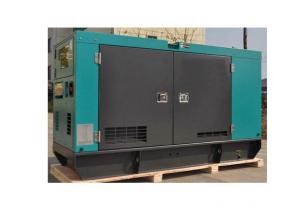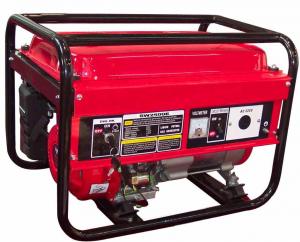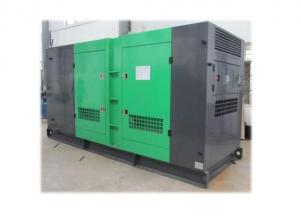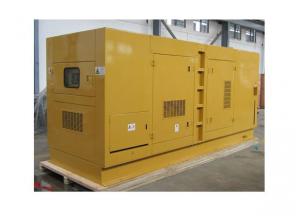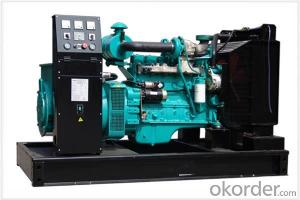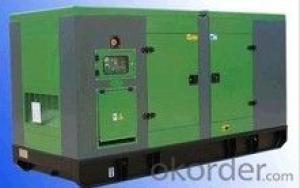Cummins Diesel Generator 500KW/625KVA C51
- Loading Port:
- Shanghai
- Payment Terms:
- TT OR LC
- Min Order Qty:
- 1 unit
- Supply Capability:
- 300 unit/month
OKorder Service Pledge
Quality Product, Order Online Tracking, Timely Delivery
OKorder Financial Service
Credit Rating, Credit Services, Credit Purchasing
You Might Also Like
| ENGINE DATA | |||||||
| Manufacturer: | Chongqing Cummins Engine | ||||||
| Model: | Original Cummins KTAA19-G6A, 4-cycle | ||||||
| Air Intake System: | Turbo, Water / Air Cooling | ||||||
| Fuel System: | Fuel Pump, EFC | ||||||
| Cylinder Arrangement: | 6 in line | ||||||
| Displacement: | 18.9L | ||||||
| Bore and Stroke: | 159X159(mm) | ||||||
| Compression Ratio: | 13:1 | ||||||
| Max. Standby Power at Rated RPM: | 610KW/830HP | ||||||
| Governor Type: | Electronic | ||||||
| Exhaust System | |||||||
| Exhaust Gas Flow: | 2054L/s | ||||||
| Exhaust Temperature: | 584℃ | ||||||
| Max Back Pressure: | 10kPa | ||||||
| Air Intake System | |||||||
| Max Intake Restriction: | 6.23kPa | ||||||
| Burning Capacity: | 750L/s | ||||||
| Fuel System | |||||||
| 100%(Prime Power) Load Consumption: | 206 g/Kw.h | ||||||
| 75%(Prime Power) Load Consumption: | 205 g/Kw.h | ||||||
| 50%(Prime Power) Load Consumption: | 206 g/Kw.h | ||||||
| Oil System | |||||||
| Total Oil Capacity: | 50L | ||||||
| Oil Pressure at Rated RPM: | 345-483kPa | ||||||
| Cooling System | |||||||
| Total Coolant Capacity: | 116.5L | ||||||
| Thermostat: | 82-93℃ | ||||||
| Max Water Temperature: | 104℃ | ||||||
| ALTERNATOR DATA | |||||||
| Manufacturer: | Original STAMFORD ,Marathon,MECC,Kaijieli | ||||||
| Frequency and Speed: | 50Hz/1500rpm | ||||||
| Altitude: | ≤1000m | ||||||
| Connecting Type: | 3 Phase and 4 Wires, “Y” Type Connecting | ||||||
| Power Factor: | 0.8 | ||||||
| Protection Grade: | IP23 | ||||||
| Exciter Type: | Brushless, Self-Exciting, with AVR | ||||||
| Insulation Class, Temperature Rise: | H/H | ||||||
| GENERATING SET DATA | |||||||
| Voltage Regulation, Stead State: | ≤±1% | ||||||
| Volts Warp(Sudden Reduce): | ≤+25% | ||||||
| Volts Warp(Sudden Increase): | ≤-20% | ||||||
| Frequency Regulation, Stead State: | ≤5% | ||||||
| Frequency Warp(Sudden Reduce): | ≤+12% | ||||||
| Frequency Warp(Sudden Increase): | ≤-10% | ||||||
| Frequency Recovery Time: | ≤5S | ||||||
| Open Type Size: | 3700(mm)X1570(mm)X2080(mm) | ||||||
| Open Type Weight: | 4820kg | ||||||
| Control System: | Original Uk deep sea auto controller | ||||||
| Standards: | ISO9001, ISO14001, European CE | ||||||
- Q: Does a current carrying conductor experiences a force onlywhen the current is in the same direction as the magnetic field?
- Current carrying conductor will always experience force, weather the magnetic field is from external or self induced magnetic field. The reason I know this is because I have been involved in testing 50,000 watt diesel generator sets by applying a dead short (1000's amps) across the output. And have observed double (00) cables jumping on the laboratory floor (like a garden hose when you slam the valve shut).
- Q: I need a specification of the inverter and battery that will work for 5-6 hours with around 10-14 laptops connected to it. Can any one please help me.
- You would need to be more specific. Multiply the watts of one laptop power supply by 14, then get a more powerful invertor. e.g. 14 x 50 watt laptops 700 watts, get at least a 1 Kw invertor. It is difficult to predict how long a particular battery will power an invertor, a 1 Kilowatt load will draw a huge current, about 50 amps from a 12 volt battery. If at all possible you would be better off using a petrol or diesel generator and extension leads, as the size of battery needed would be enormous, you would need a no. of 12 volt large 12 volt batteries joined together, or one battery and one x 100 watt invertor for each laptop. You might also consider using a battery to power a DC to DC convertor for each laptop. For example one laptop could use a 12 volt, 50 AH battery and a 12 to 20 volt convertor, this will probably run a 50 watt laptop for 6 hours. I say probably because the only way to know for sure is to try it out. For the price of 14 batteries and 14 convertors you can probably buy a really good silent 1 kw petrol generator. This will be smaller, lighter and probably safer than 14 x 50 AH batteries.
- Q: i think having a back up generator at my home would be useful in case of winter power disruptions however and although the new generation generators are quiet enough to stand next to where would I stand with electricity suppliers ?
- No. Running a fuel-powered motor inside any building is unsafe.
- Q: How much power does the generator from the diesel need to produce in order to bring the train up to running speed?
- That all depends upon a number of things. First is the type of traction motor that is driving the wheels. Next is the weight of the entire load to be moved by the traction motors. Also is the grade the load is being moved upon. When a locomotive gets up to speed it might not be using many amps by the traction motors to maintain the speed. However, to start from a dead stop on flat track with a very heavy load it could run as high as 200 or more amps. Again, it also would depend upon the number of engines driving the number of generators driving the number of traction motors. A single locomotive might need to use more amps to get up to speed than a combination of locomotives hauling the same load. There are many variables to this question. Given a particular locomotive, types of traction motors, the load weight, it would be easier to calculate what would be needed in amperage. Everything depends upon all of these things. An engineer can burn up a traction motor(s) by exceeding the amount of amps maximum that the motor can handle. The generators don't care, nor do they figure into the problem. The diesels don't care either. They will just turn the generators faster with more RPM's, and the faster they run, the more the generators will produce, but will the traction motors handle what is given them?? It just depends .
- Q: Does any one know the best way to go about have an entire house run off of a generator? Mostly likely over periods of no great than two weeks. But it needs to supply a Washer/Dryer, Central A/C, Water Heater, and all of the basics of a smaller house. I did the math and the math says the max I will need is apprx 13,500W. I've done a lot of research on portable, residential, and even green energy, but I am having trouble finding the best way to go about powering a house continually. I need something relatively quiet, or something I can run a ways from the house.And lastly one more curve ball, this is for west TX, so there's not too much rain, especially these days. But it is a desert atmosphere, so I need a way to keep it out of the elements. Any suggestions? Well ventilated shed maybe? Thanks!
- I okorder
- Q: What type of diesel engine diesel
- The temperature at minus 10 degrees - minus 20 degrees with -20 diesel.
- Q: hi i covered diesel motor with sheet metal and a guard needs to protect a person from accident.etchere is some info abt cover: it is ventilated. the box mounted securely over the motor. it has exposed belts it combustion(diesel engine) and it is located in cerro alto , guattemala, the voltage is 120v and its 12 hp and it is driving a corn grinding machine and its indoor.so help me plz thanks
- Diesel exhaust can eliminate the oxygen in a room. Be sure the exhaust system doesn't leak into the room. Where is the intake coming from? Is there a separate duct for intake air or does the engine take air from the room. The exhaust pipe will be hot, and needs people protection. Exposed belts should have a guard so nothing can accidentally be caught or jammed into them. Is the cooling fan guarded or protected? Can the shut down switch/lever be quickly and easily operated. Is the fuel tank separate from the engine? Is there a fuel shutoff valve? Just some things to consider.
- Q: creating steam turbines that can run on ANYTHING to power the electric generators in modern engines?
- So you people don't really read any of these postings do you? How many times do we have to answer the same questions? Bio diesel is not the way to replace fuel oil (diesel). There is not enough acreage in the USA to grow the amount of crops, any crops, to make bio fuels to power the existing fleet of vehicles much less the future fleet. And carrying water on locomotives is very inefficient. Steam Engines (Sterling Engines) are a very efficient means of moving huge vehicles. That is why they use nuclear/steam to power air craft carriers but hauling water to make steam cuts the payload so much that it becomes unprofitable. Why would we want to go back in time and technology? We can go to plug in electric powered vehicles that are charged by photovoltaic panels at your home or work. And, naysayers pay attention to this, Linear Electric Drive would power long distance and heavy hauling.
- Q: If hydrogen is actually costing 6 to 15 times the energy to manufacture, will cost trillions to provide the infrastructure, then why are so many trying to push it? If battery powered vehicles (full electrics) are only able to get 20 to 75 miles per charge, why do we like them? Personally I like the idea of the new clean diesel engines being provided, and mated with hybrid technology. Pros? Diesel fuel infrastructure is already in place, only needs a little expansion. Hybrid tech is already showing itself to be superior to hydrogen in durability, and in cost savings. Cons - I dont really see them modern diesels are cleaner, quieter and more powerful than ever. Hybrids, especially with the American mindset of GO GO GO are showing they can go and save fuel. Tell me some of your ideas and thoughts on this topic. Enjoy
- Personally, I would like that 75MILE charge electric car, BUT with an on-board DIESEL generator to double, triple or quadruple the range or more.
- Q: Can any anyone help me with this. The generator is a brushless, air-cooled diesel generator without AVR. It is kinda old and it's made from Japan. The manufacturer is Yanmar.
- Open up the end of the generator and check the capacitor. It may need to be replaced. You may also have to flash the field if it hasn't been used for some time. Try one of these techniques 1. Plug the electric drill into the generator receptacle. If the drill is reversible, move the direction switch to the forward position. Start the engine. While depressing the trigger on the drill, spin the drill chuck in reverse direction. This will excite the field and the generator will now produce electricity. If spinning the chuck one direction does not work, try spinning the chuck in the other direction as you may have the reverse switch positioned backwards. Use caution not to get your hand or other materials caught in the chuck. As soon as the field is excited, the generator will produce power and the drill will turn on. 2. If the engine is working fine, but there is no output voltage try this trick. It may work on standard alternator type generators, but not on those which use an inverter. It worked for me in the past, but try at your own risk. First check to ensure that all circuit breakers and fuses are ok. Shut off the engine and remove any cords from the generator. Plug in a cord with bare wires on the other end to one of the 120VAC outlets. Connect one end of the cord to a car battery. Very quickly touch the other wire to the other battery terminal. Do not leave it there longer than to create a few sparks or you may destroy the windings. If the residual magnetism in the alternator had weakened, this may be enough to get it started again.
Send your message to us
Cummins Diesel Generator 500KW/625KVA C51
- Loading Port:
- Shanghai
- Payment Terms:
- TT OR LC
- Min Order Qty:
- 1 unit
- Supply Capability:
- 300 unit/month
OKorder Service Pledge
Quality Product, Order Online Tracking, Timely Delivery
OKorder Financial Service
Credit Rating, Credit Services, Credit Purchasing
Similar products
Hot products
Hot Searches
Related keywords
